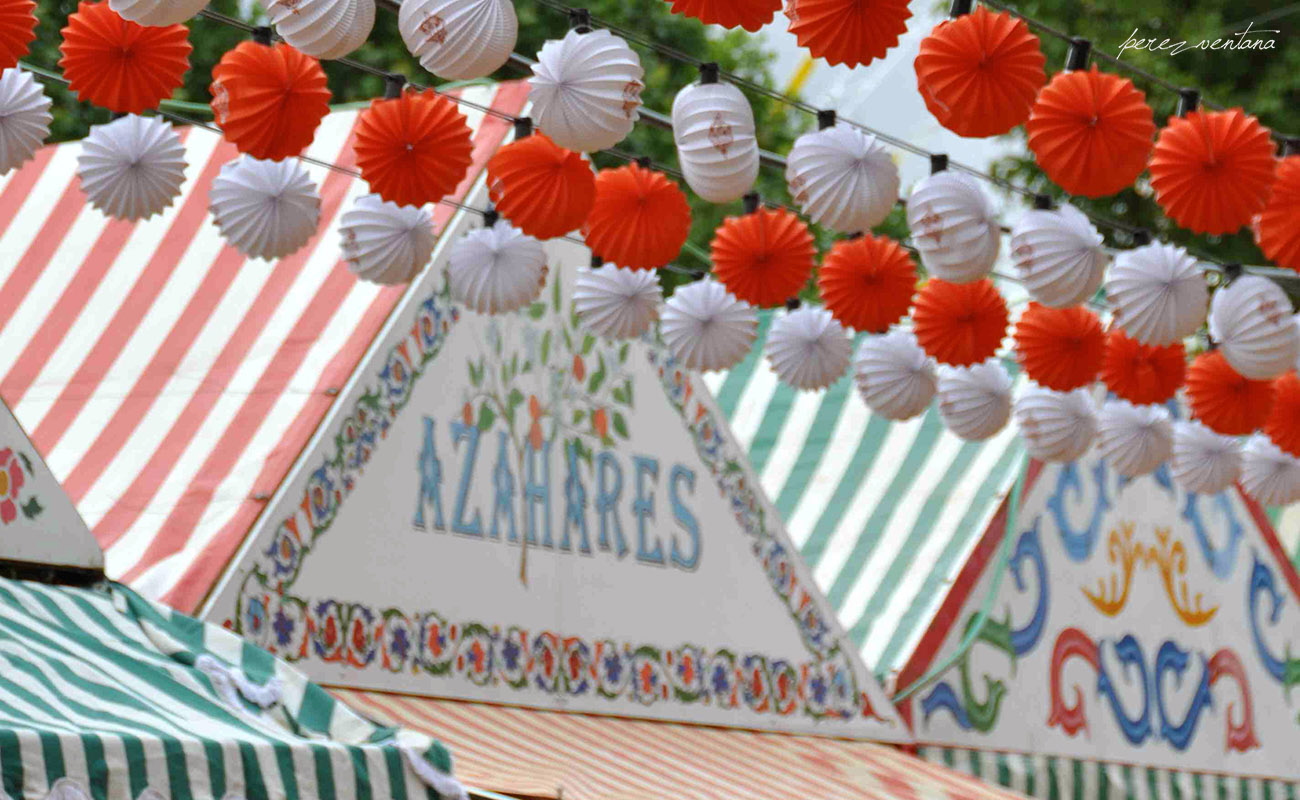Grandpa, flamenco and the Seville Fair
Fifty years ago, when the fair was held at the Prado de San Sebastián, there were good parties. You would go one night and you might end up listening to Terremoto and Sordera singing in the reserved area of some of the private booths, or you could see Farruco and Juan el Tumba dancing.

-Grandpa, April being the month of the world-renowned Seville Fair(1), could you tell me how flamenco was experienced in that fair? Particularly back in the day, when you were young.
-Flamenco and fairs have never got along well, anywhere, because this art requires some intimacy, a proper ambiance where the performer and the spectator are able to communicate, specially when it comes to cante. Baile it’s a bit different, of course, as it’s better adapted to noise and hubbub, and it’s more visual. Yet, it’s impossible that in such a place anyone could sing a seguiriya that touches people’s hearts.
-Yet, there has always been great parties at the Seville Fair, in the old days and in our days, too.
-Certainly so. I enjoyed some parties I’ll never forget, such as one with Perrate and Gaspar de Utrera, his nephew, two geniuses. Not in the current location, but in El Prado(2), at the El Traga booth. I also saw an amazing baile performance by Niña de los Peines, who incidentally performed in public for the first time at the Seville Fair in 1898, just eight years old, filling in for his brother Arturo, who got drunk and was unable to perform that day.
-Amós Rodríguez, brother of Beni de Cádiz, once told me that his brother filmed Pastora performing one night, dancing precisely at the Seville Fair. Do you know anything about this?
-Oh yes. I’ve looked for that film everywhere. Amós had it as his house, but neither him or myself were able to find it. These days it would be worth a fortune, as it would be the only existing film (amateur, in this case) showing a performance of Pastora Pavón, no such thing exists.
-Even Tomás Pavón sang at the Seville Fair, didn’t he?
-Sure, Tomás would sing wherever they called him, and even as he didn’t like performing in public, that’s how he made a living. Pericón de Cádiz tells in his memoirs how much Tomás suffered when he had to sing accompanied by a barrel organ. He suffered because, for him, cante jondo was sacred, like going to church. Tomás had influential friends in Seville who would pay him to sing at their private parties, that’s how he made a living. Yet, just imagine him at the Fair singing the debla or the martinetes of Juan el Pelao. The same goes for Manuel Torres, another one who didn’t like singing on stage.
-Did they ever sing sevillanas(3)? I mean, Manuel Torres and Tomás.
-All singers back then sang sevillanas, although few recorded them. Silverio and Juan Breva sang them. Actually, Breva used to sang Las Corraleras de Triana(4) in Madrid back in 1880. Later, when records started being made, El Mochuelo, Escacena and Pastora recorded some wonderful sevillanas. In those days, sevillanas were part of the repertoire of most artists of cante, because in parties there were always some ladies who wanted to dance them. Althought, to be fair, I canot imagine Tomás singing sevillanas to the wife of the bullfighter Fuentes, or to the wife of Bombita.
-Don’t you have any funny story about flamenco at the Seville Fair?
-For sure, I have lots of them. Manuel Vallejo was another eccentric character of cante who sometimes had an insufferable bad mood, although people should be understanding. The story goes that Marchena was once invited to sing in a party at the Seville Fair, but Marchena could be very mean if he wasn’t in a good mood. So he told the broker: “I don’t sing just anywhere, but you can call Vallejo, he has a nice whistle”. As Marchena and Vallejo got along like cats and dogs, when the broker contacted Vallejo telling him he would be going in place of Marchena, all hell broke loose. “Oh, I have a good whistle, eh? Well if you want a good whistle, just take the train to Utrera and take Marchena with you, so he can sing milongas to your holy mother”.
-So, grandpa, flamenco and fairs aren’t a good mix, then.
-Not at all, and even less these days. Fifty years ago, when the fair was held at the Prado de San Sebastián, there were good parties. You would go one night and you might end up listening to Terremoto and Sordera singing in the reserved area of some of the private booths, or you could see Farruco and Juan el Tumba dancing. Back then, everyone at the Fair knew each other, Manolillo. Nowadays, it’s grown so big that unless you tie up a GPS on your horse’s tail, you may end up at the Colombinas (5)
-You’re always so witty, grandpa. So aren’t you going to the Fair this year?
-I have nothing to look for in that place, kid. The last time I went to the Fair, so long ago I don’t even remember which year it was, I complained that there was dust on my dish of ham, and they just handed me a duster.
(1) April 12 -17, 2016. The Fair dates back to 1847
(2) Prado de San Sebastián (literally “St Sebastian Plains”) a large park just south of old-town Seville. Since 1973, the Fair has been held in the Los Remedios district of Seville, just south of Triana, across the Parque de los Príncipes.
(3) Sevillana is a popular music and dance style of Andalusia. Officially it is a “palo” of flamenco, although some purists look down on Sevillanas and do not consider them as “true” flamenco.
(4) Corraleras de Triana: a popular sevillana song
(5) Las Colombinas: a fair in Huelva, about 50 miles west of Seville.





